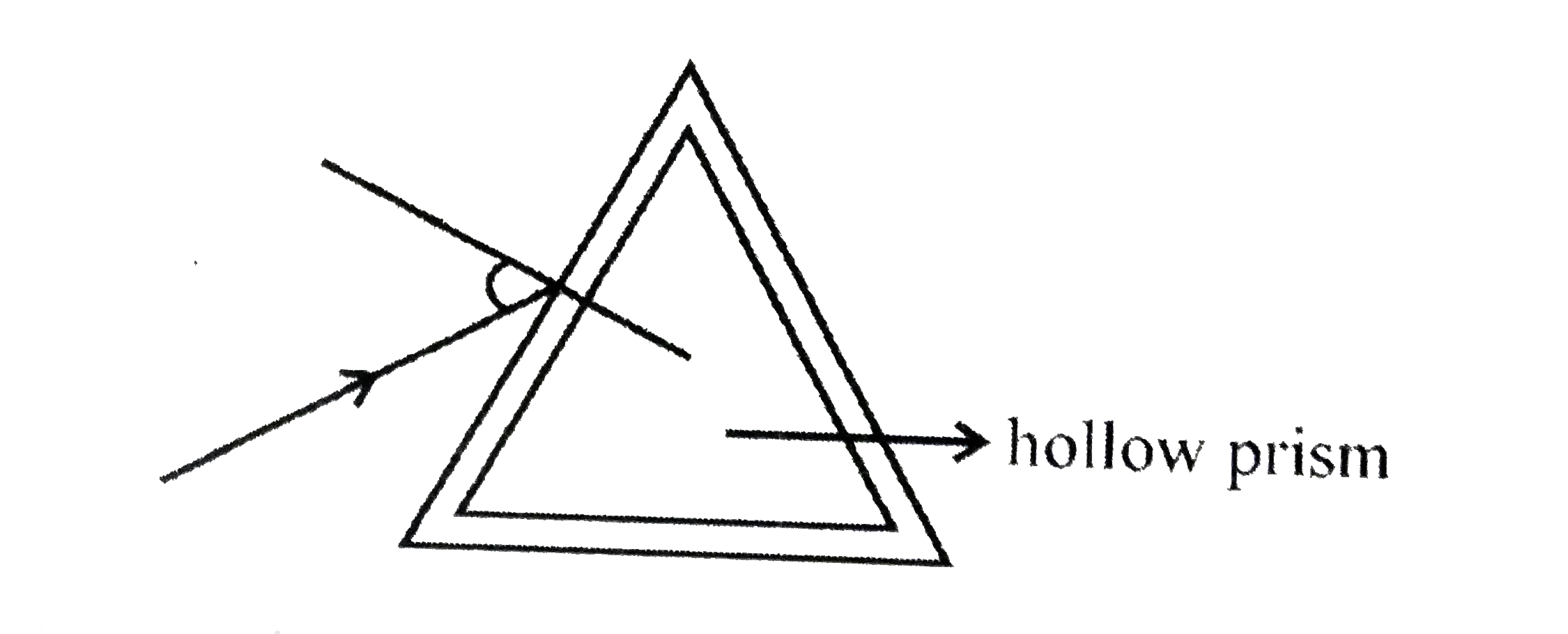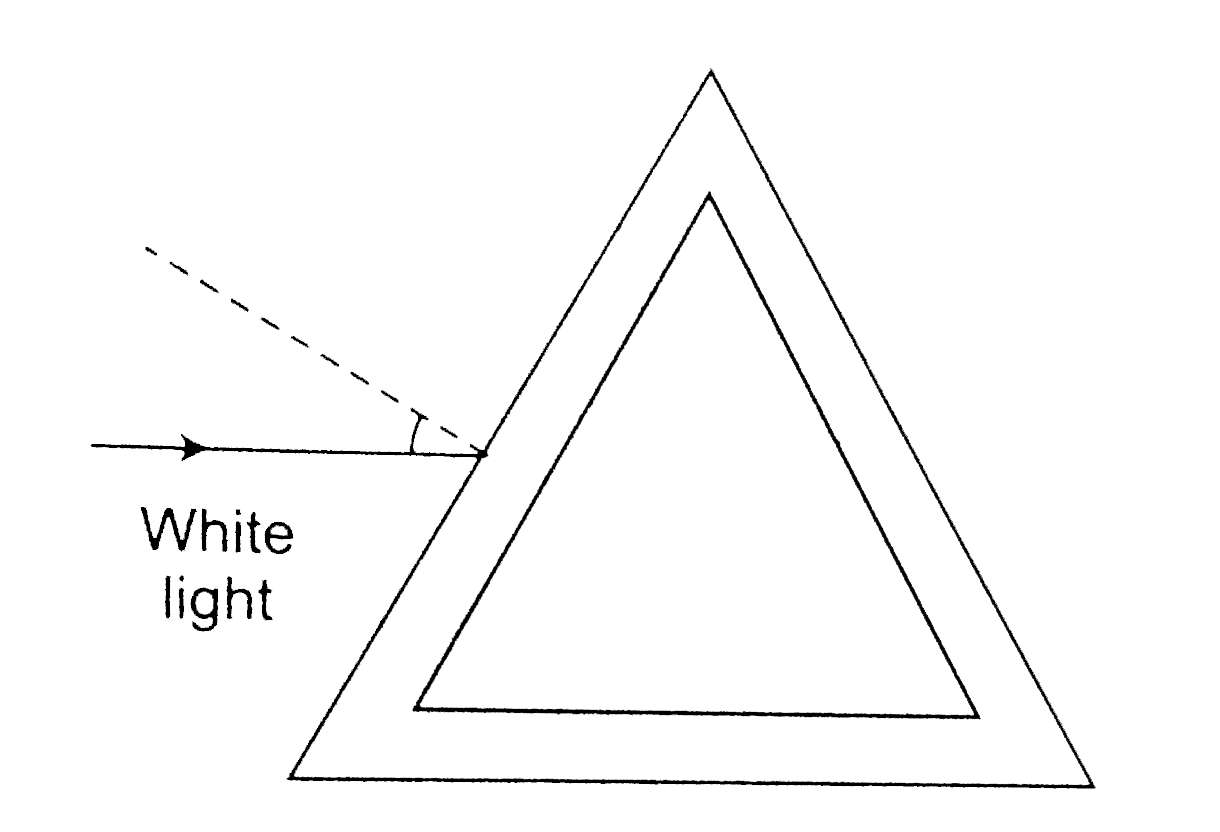A beam of white light is incident on a hollow glass prism having very thin glass walls . Then ,

in the emergent beam we get a spectrum , where the deviation of violet is maximum and that of the red is minimum
in the spectrum obtained in the emergent beam , the deviation of the red is maximum and that of the violet is minimum
no spectrum is obtained in the emergent beam
in the spectrum obtained in the emergent beam all colours are deviated away from the base
The correct Answer is:C
No spectrum is obtained because there is practically no refracting material .
Topper's Solved these Questions
- REFRACTION OF LIGHT BOOK - MARVEL PUBLICATIONCHAPTER - REFRACTION OF LIGHT EXERCISE - Test Your Grasp
10 Videos
- RAY OPTICS (MIRRORS, LENSES AND OPTICAL INSTRUMENTS)BOOK - MARVEL PUBLICATIONCHAPTER - RAY OPTICS (MIRRORS, LENSES AND OPTICAL INSTRUMENTS)EXERCISE - TEST YOUR GRASP
10 Videos
- VECTORSBOOK - MARVEL PUBLICATIONCHAPTER - VECTORSEXERCISE - TEST YOUR GRASP
10 Videos
Similar Questions
Knowledge Check
When white light is incident on a hollow prism,
Athe light emerges from the prism and gives rise to spectrumBthe light emerges giving no spectrum.Cthe light doesn't emerges from the prism and spectrum is not observedDthe light emerges from the prism and gives spectrum, but all colours bend towards the base.A beam of white light is incident on a hollow prism of glass. Then
 Athe light emerging from prism gives spectrum but the bending of all colours is always from baseBthe light emerging from prism gives spectrum, all the colours bend towards the base, the violet must and red and leastCthe light emerging from prism gives spectrum, all the colours bend towards base, the red the least and violet the mostDthe light emerging from prism gives no spectrum
Athe light emerging from prism gives spectrum but the bending of all colours is always from baseBthe light emerging from prism gives spectrum, all the colours bend towards the base, the violet must and red and leastCthe light emerging from prism gives spectrum, all the colours bend towards base, the red the least and violet the mostDthe light emerging from prism gives no spectrumA beam of white light is shone onto a glass prism. The light cannot be :
ADeviatedBDispersedCFocusedDRefracted
The refractive indices of the crown glass for violet and red lights are1.51and 1.49respectively and those of the flint glass are1.77and1.73respectively A prism of angle 6∘is made of crown glass .A beam of white light is incident at a small angle on this prism.The other thin flint glass prism is combined white the crown glass prism such that te net mean deviation is1.5∘anticlockwise.
(i)Determine the angle of the flint glass prism.

(ii)A screen is placed normal to the emerging beam at a distance of2mfrom the prism combination.find the distance between red and violet spot on the screen Which is the topmost colour on screen.
View SolutionThe refractive indices of the crown glass for violet and red lights are1.51and 1.49respectively and those of the flint glass are1.77and1.73respectively A prism of angle 6∘is made of crown glass .A beam of white light is incident at a small angle on this prism.The other thin flint glass prism is combined white the crown glass prism such that te net mean deviation is1.5∘anticlockwise.
(i)Determine the angle of the flint glass prism.

(ii)A screen is placed normal to the emerging beam at a distance of2mfrom the prism combination.find the distance between red and violet spot on the screen Which is the topmost colour on screen.
View SolutionWhite light is incident normally on a glass slab. Inside the glass slab,
View SolutionWhite light is incident normally on a glass slab. Inside the glass slab,
View SolutionA beam of white light is incident on the glass-air interface from glass to air such that green light just suffers total internal reflection. The colors of the light which will come out to air are

View Solution
